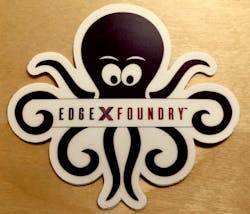Your Automation Word Du Jour: Decoupling
If you haven’t yet encountered the term “decoupling” yet, prepare yourself. As the name implies, decoupling refers to separating or disconnecting two previously connected things. In terms of automation technologies, it principally applies to how the apps you use to interface with your control systems will be connected to devices or systems.
I first encountered use of the term “decoupling” while learning about MQTT and how its use of a broker decouples apps from the devices they interact with. This is critical both for the performance of the plant floor device as well as for managing access to the device’s data. Since then, I’ve seen the term used in references to OPC UA interoperability, human machine interface (HMI) hardware and software, digital twins and DCSs and embedded edge devices.
Most recently, at the IoT Solutions World Congress, I met with Jason Shepherd of Dell and Keith Steele of IoTech to discuss their work with EdgeX Foundry, an open source Linux Foundation project working to build a common open framework for IoT edge computing. The idea behind EdgeX Foundry’s framework is to enable plug-and-play components (e.g. apps) to be combined for secure, scalable IoT systems. EdgeX members with whom Automation World readers will be familiar include AMD, Analog Devices, Dell, FogHorn, Intel, Mocana, Opto 22, Samsung and Xage Security. Needless to say, decoupling figures heavily into EdgeX Foundry’s approach.
When it comes to connecting industrial devices and applications, Shepherd said he has three rules that are critical to EdgeX:
1. Decouple apps from infrastructure. “After all, when was last time you used ERP to run your DCS?” he asked.
2. For a consistent infrastructure, everything needs to be “plugged in.” So it’s important to decouple the edge from the cloud as close to the edge device as possible. “If you hard-couple devices to public cloud stacks, you’ll have to pay to get your data back,” he warned.
3. For analytics purposes, decouple all domain knowledge from the platform. That is, domain knowledge should reside with the apps and related databases. EdgeX plans for more analytics-oriented applications. So, by having domain knowledge separate from the platform, Shepherd says, users will be able to more easily conduct analytics at the platform level, enabling them to “analyze the analytics.”
In the 18 months since the launch of EdgeX Foundry at Hannover Messe 2017, Steele noted that there have been three code releases, with the fourth (Delhi) being readied for release soon. In addition, several products featuring EdgeX capabilities—or that are EdgeX ready—have been introduced. Those products come from companies such as Dell, IoTech, Mocana and VMware. Shepherd noted that EdgeX Foundry plans to have a certification ready for launch by April 2019 so that products can be shown to conform with EdgeX infrastructure.
As open source technologies figure more prominently into automation, Shepherd cautions users to consider the backing of the open source organizations behind them. He noted that organizations like EdgeX Foundry and Eclipse Foundation are publicly backed groups with an array of different technology supporters committed to being open source. However, there are some groups that are not entirely open because the software they develope is funded only by a specific group of companies and intended for use with their products.
“We want EdgeX to scale quickly,” said Shepherd, “That’s why we’re looking at this globally. We chose to work with the Linux Foundation because we need to have clear governance and need to be truly open sourced to drive a de facto standard.”
About the Author
David Greenfield, editor in chief
Editor in Chief

Leaders relevant to this article:
